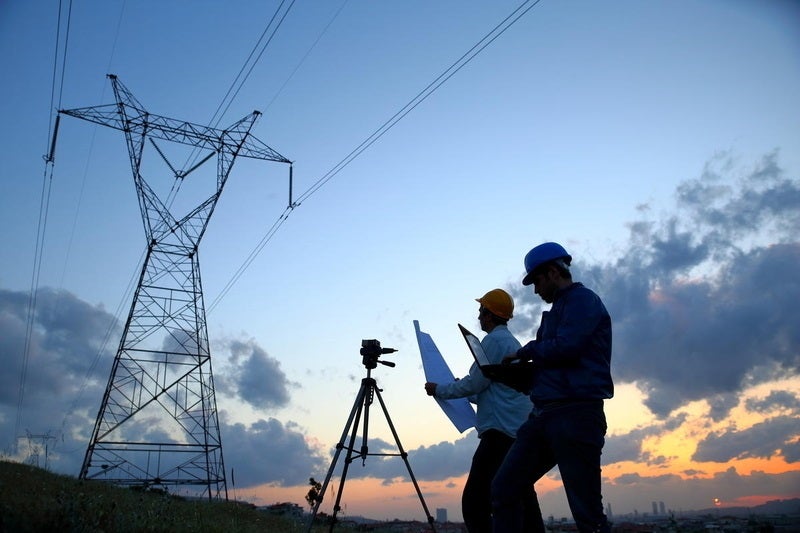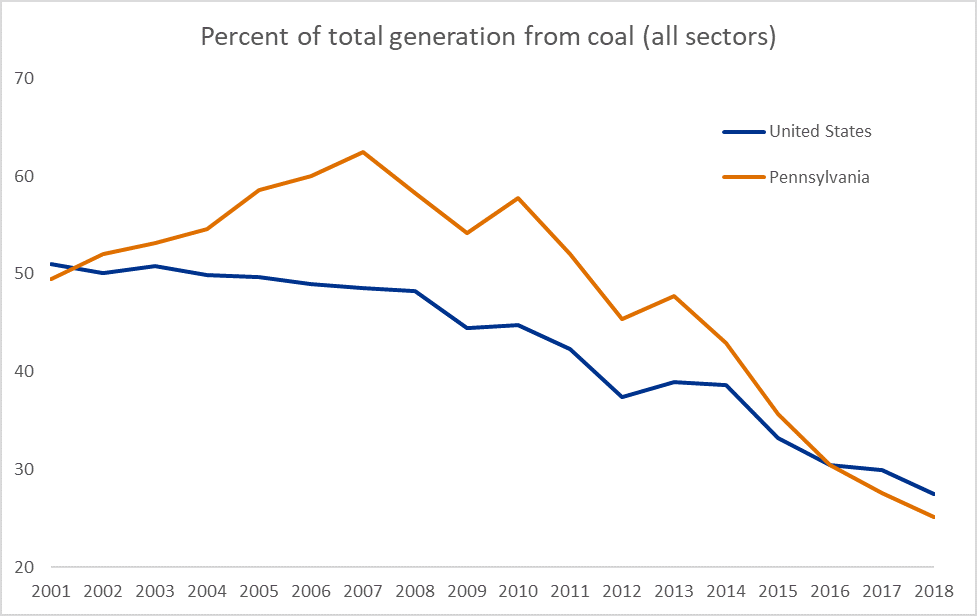Protecting Pennsylvanians from COVID-19 and addressing the systemic racial injustices that plague our communities must be the top priorities of our elected officials right now. However, it’s critical lawmakers don’t lose sight of the escalating threats to our health and economy, including the pollution that impacts the safety and well-being of our families and communities.
In fact, this pandemic has made the urgency of proactive, science-based policy solutions all the more evident.
Lawmakers in Pennsylvania have a real opportunity to combat the looming and likely most extreme public health crisis of our generation, climate change, while rebuilding a stronger economy in the wake of COVID-19. Linking to the Regional Greenhouse Gas Initiative (RGGI), a flexible and proven cap-and-invest program that allows member states to reduce carbon emissions, is a simple, cost-effective way to do so. Pennsylvania’s power sector, currently the fifth dirtiest in the nation, can achieve significant emission reductions through RGGI while creating value in myriad ways by driving investment in renewable energy and energy efficiency, including targeted efficiency for low-income consumers. Presently, ten Northeastern states are reaping the benefits of RGGI – New Jersey joined the program this year and RGGI’s eleventh state, Virginia, will be joining next year.
With a vote from the state’s Environmental Quality Board (EQB) expected in September, a candid assessment of what RGGI can offer Pennsylvanians, especially in the context of COVID-19, is warranted.
Rebuilding a Stronger and Cleaner Economy
RGGI is consistent with strong and sustainable economic growth — a direction Pennsylvania was already headed in before COVID-19 struck. Although some have blamed RGGI and other environmental regulations for the loss of coal jobs — and some legislators have even proposed bills to stop this crucial rulemaking during the pandemic, when it is needed more than ever — the coal industry has been in decline for decades largely as a result of market forces that prioritize the lowest-cost electricity generation and attendant lower electricity costs to ratepayers. Nationally, more than 100,000 coal mining jobs have been shed since 1985 and hundreds of coal-fired power plants have closed in the last decade, with the declining costs of natural gas and renewables largely fueling this shift.
Pennsylvania knows this better than any state as it has been at the heart of unconventional natural gas development. Coal power generation in Pennsylvania has dropped from 57% of total generation in 2010 to 25% in 2018, while natural gas has increased its market share from 18% to 43% in that timeframe, effectively replacing the bulk of coal-fired electric generation.
Market forces suggest that natural gas will continue to replace coal as a low-cost energy source into the next decade. RGGI can help ensure we lock in and deepen emissions reductions while creating value that drives targeted investments in job-creating energy efficiency, renewables and more. Therefore, a program like RGGI can lead to the expansion of Pennsylvania’s 90,000+ clean energy jobs, which have grown to outnumber jobs in the fossil fuel industry, and position the state as a leader in the clean energy economy.
Flexibility to Re-Invest in Pennsylvania
The beauty of a cap-and-invest program like RGGI? Its flexibility. Regulators set a firm, declining pollution limit (or cap), and then facilitate compliance with this limit by issuing a finite number of “allowances” that are required to be held by any polluting companies to account for every ton of carbon dioxide pollution emitted. The volume of allowances available for compliance is equivalent to the annual pollution limit, and this budget shrinks over time, guaranteeing pollution will go down.
Regulated companies can make the business decision of how best to meet the pollution limit—such as improving efficiency or reducing utilization of dirty energy sources— and can buy and sell allowances if lower cost reductions are available. This flexibility ensures that the cap is met cost-effectively, thereby enabling greater reductions at lower cost. Under existing law, the revenues from the program can go toward activities that reduce pollution, including through targeted investments in at-risk and vulnerable communities. Energy efficiency measures are just one example of cost-saving and pollution-reducing activities that could be leveraged in the RGGI program in Pennsylvania, as has been done to great effect in other RGGI states. Revenue could also be directed toward investment in things like on-bill consumer assistance and facilitating fairness for fossil fuel workers and communities who have been – and will be — affected by the long-term and inevitable energy transition.
So far, states participating in RGGI have returned over $2 billion in proceeds. Maryland, for example, has used its more than $500 million in proceeds to strategically invest in energy efficiency upgrades for low- to moderate-income households, improving energy efficiency for small businesses and more, as a way to drive energy costs even lower. As Pennsylvania recovers from the economic downturn brought on by COVID-19, there will undoubtedly be needs that these proceeds can address via strategic investment in pollution-reducing activities and advancing equitable outcomes for workers and communities.
A Proven Track Record of Results
RGGI has a 10-year history of delivering health and climate benefits to participating states. Residents in the Northeast are now experiencing significantly fewer premature deaths, heart attacks, and respiratory illnesses. And it’s particularly important to note that the health burdens of dangerous air pollution, like soot and smog, fall most heavily on communities of color.
The potential soot and smog pollution reductions generated is great news for Pennsylvania, which has some of the worst air quality in the nation. A new study published in the journal Environmental Health estimates that about 40% of air pollution-related coronary heart disease deaths in Allegheny County occur in environmental justice communities, even though these communities represent just 27% of the county’s total population.
And if there’s one thing on which the Republican and Democratic governors of RGGI states can agree, it’s that the program is incredibly effective at tackling climate pollution. RGGI states have reduced power plant carbon emissions by 47% since 2009, which outpaces other states’ reductions over the same time. Multiple analyses looking at Pennsylvania affirm that RGGI can significantly reduce climate pollution in a cost-effective manner, demonstrating that this proven program can help the state achieve its bold climate goals and protect our children and grandchildren from the worst impacts of climate change. Despite claims from some that emissions will just move to other states (i.e. “leakage”), EDF and M. J. Bradley & Associates modeling analysis presented to PJM last year shows that PA linking with RGGI will lead to net emissions reductions when looking at Pennsylvania, the RGGI region, and nationally. This analysis also shows that Pennsylvania can maintain its current role as a net energy exporter (slide 13) as it links with RGGI and in fact increases its net exports from current levels in 2030. This is due in part to the fact that Pennsylvania is an energy-rich state that helps power the region.
With all of these benefits in mind, Gov. Tom Wolf is doing the right thing in charting a course for RGGI pursuant to the authority granted to him by the state legislature under Pennsylvania’s Air Pollution Control Act.
What’s Next?
The Pennsylvania Department of Environmental Protection is proposing its draft rule to the Environmental Quality Board at its meeting in the coming months. Lawmakers shouldn’t stand in the way and must seriously consider the overwhelming evidence in support of RGGI along with the strong public support for climate action in Pennsylvania. This market-based solution can offer the economic opportunities, health benefits and flexibility that Pennsylvanians will desperately need on the other side of COVID-19 — and in the long-term fight against climate change.
As Governor Wolf reminded us all in a recent announcement, “Addressing the global climate crisis is one of the most important and critical challenges we face. Even as we continue work to mitigate the spread of COVID-19, we cannot neglect our responsibility and our efforts to combat climate change.” Governor Wolf is showing strong leadership in Pennsylvania – it’s time for lawmakers to heed the wishes of their constituents and step up for the future of all Pennsylvanians.

